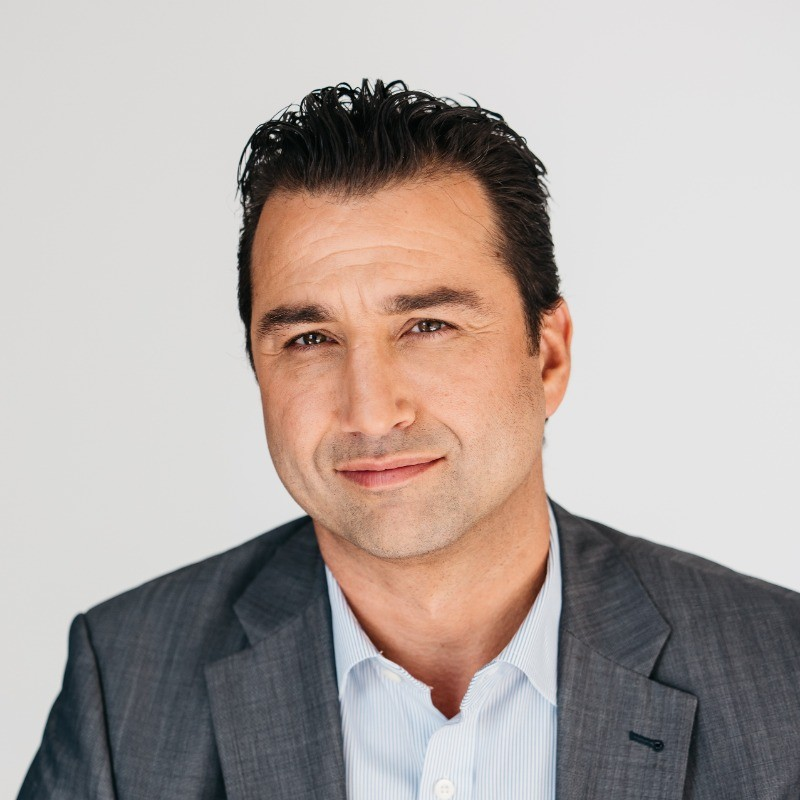Highlights
Description
Vision 87 delivers 87 energy-efficient rental units in a growing suburb of Montreal, Canada’s second-largest city and economic hub of Quebec. Known for its strong real estate market and high demand for rental housing, Montreal attracts families and professionals with its vibrant economy, world-class infrastructure, and quality of life. This project offers a rare opportunity to benefit from rising rental income, long-term property appreciation, and early returns through a phased development approach tailored to meet high tenant demand.
Vision 87 delivers 87 energy-efficient rental units in a growing suburb of Montreal, Canada’s second-largest city and economic hub of Quebec. Known for its strong real estate market and high demand for rental housing, Montreal attracts families and professionals with its vibrant economy, world-class infrastructure, and quality of life. This project offers a rare opportunity to benefit from rising rental income, long-term property appreciation, and early returns through a phased development approach tailored to meet high tenant demand.
Projected returns
- 27.3% target construction ROI in 15 months [1] ;
- 14.1% target IRR over 5 years [1] ;
- Recurring monthly dividends from rental income ;
- Strategic exit : Sale or refinancing in 5 years to maximize investor returns [2];
- Early Exit Potential: Liquidity through peer-to-peer trading or secondary markets, if conditions allow.
Opportunities
Prime location : low vacancy rate, strong transit access, and proximity to key economic hubs ;
Low entry point : start with $10,000 USD, scalable in $1,000 USD increments.
Risk mitigation
CBRE valuation : leader in real estate analysis and appraisals ;
Accountants validation : financial forecasts certified by a top global accounting firm ;
Escrow safeguards : Managed by Enterprise Bank with milestone-based disbursements ;
Performance bond : construction completion secured by Intact Insurance ;
Regulatory compliance : structured for SEC Reg D eligibility, subject to regulations.
Experienced team
20+ years of expertise : specialists in residential construction and development ;
Proven track record : successful delivery of government contracts and private sector projects.
Notes:
[1] Source: Accountants Financial Projections Report in data room below. Note that projected returns are calculated in CAD and exclude provisions for FX fluctuations and construction cost contingencies. Unused FX provisions will remain in the contingency fund.
[2] Exit Disclosure: Exit opportunities, whether through refinancing, secondary markets, or asset sales, are subject to market conditions and investor demand. There is no guarantee of liquidity, pricing, or successful divestment at projected valuations.
[3] Additional Information about the Location can be found in the CBRE Appraisal Report in data room below
[1] Source: Accountants Financial Projections Report in data room below. Note that projected returns are calculated in CAD and exclude provisions for FX fluctuations and construction cost contingencies. Unused FX provisions will remain in the contingency fund.
[2] Exit Disclosure: Exit opportunities, whether through refinancing, secondary markets, or asset sales, are subject to market conditions and investor demand. There is no guarantee of liquidity, pricing, or successful divestment at projected valuations.
[3] Additional Information about the Location can be found in the CBRE Appraisal Report in data room below
Overview
Description
Vision 87 delivers 87 energy-efficient rental units in a growing suburb of Montreal, Canada’s second-largest city and economic hub of Quebec. Known for its strong real estate market and high demand for rental housing, Montreal attracts families and professionals with its vibrant economy, world-class infrastructure, and quality of life.
This project offers a rare opportunity to benefit from rising rental income, long-term property appreciation, and early returns through a phased development approach tailored to meet high tenant demand.
Key features
Vision 87 delivers 87 energy-efficient rental units in a growing suburb of Montreal, Canada’s second-largest city and economic hub of Quebec. Known for its strong real estate market and high demand for rental housing, Montreal attracts families and professionals with its vibrant economy, world-class infrastructure, and quality of life.
This project offers a rare opportunity to benefit from rising rental income, long-term property appreciation, and early returns through a phased development approach tailored to meet high tenant demand.
Key features
Three-phase development :
· 87 units across three 3-story buildings, generating early revenue streams as each phase is completed.
Suite mix :
· Building F : 33 units, averaging 885 SF/unit (1, 2, and 3-bedroom layouts) ;
· Buildings E & D : 27 units each, averaging 875 SF/unit ;
· Estimated rents : starting from $1,895 to $2,770/month and expected to grow 5% per year.
Parking accessibility :
· 114 parking spaces (60 indoor, 54 outdoor) provide additional revenue streams.
[See data room for further details on the development]
Prime location in Laval
Located in Laval, a thriving Montreal suburb offering access to key amenities :
- Carrefour Laval : one of Canada’s largest shopping malls with over 300 stores, dining, and entertainment options ;
- Centropolis : A vibrant lifestyle hub with restaurants, cafes, cinemas, and year-round events ;
- Public transit : Gare Sainte-Rose train station provides a direct link to downtown Montreal, offering a fast commute. Bus and metro options enhance regional access.
Proximity to biotech city : A hub for life sciences and technology, attracting professionals and fostering tenant demand.
Ideal for young professionals, families, and retirees seeking suburban convenience and proximity to Montreal’s economic center.
Ideal for young professionals, families, and retirees seeking suburban convenience and proximity to Montreal’s economic center.
Key Team Members

Danick Dufresne CEO 20+ years in real estate leadership, pioneering sustainable construction practices ; Implements property management strategies focused on tenant satisfaction, operational efficiency, and long-term occupancy. |

Marc-André Lagacé Head of Development 20+ years of experience ; Co-founded MA2D, delivering excellence in residential and industrial real estate ; Leads project execution, prioritizing safety, quality, and timely delivery across a portfolio of successful projects over the past 14 years. |

Madani Boukalba CEO, T-Rize Group 15+ years in capital markets, specializing in risk analysis, market strategies, and tokenization technologies ; Develops and advances tokenization strategies to optimize asset accessibility and market integration. |
Market Commentary
Construction BOOM : Canada’s key opportunity in 2025
Key market drivers in Canada
- 3.5M more homes needed by 2030 (source : CMHC) : housing demand far exceeds projections, creating strong opportunities for new developments;
- Limited supply : tight inventory and rising construction costs push property values higher;
- High rental yields : strong demand ensures stable occupancy and growing rental returns;
- Exclusive investor window until 2027 : Restrictions on foreign buyers for real estate provide a unique opportunity for compliant global investors.
Strong market demand
- 2.1% vacancy rate : among the lowest in the region, indicating high rental demand ;
- 9.7% 1-Yr rental growth : driven by limited supply and increasing population ;
- $138,057 CAD median income : exceeds regional averages, supporting demand for premium rentals.
Source: CBRE report in data room
Risks and Disclosures
1. Risk Factors
Investing in the securities offered in this Private Placement Memorandum involves substantial risks. Prospective investors should carefully review the following risk factors, as well as all other information provided in this Memorandum, before making an investment decision. This list is not exhaustive, and additional risks may apply. Real estate investments involve unique challenges and uncertainties that may result in the partial or complete loss of the investment.
1.1. Real Estate Market Risks
Market Volatility
Real estate values and rental income are directly influenced by economic cycles and can be highly volatile. Fluctuations in interest rates, inflation, or economic recessions can lead to a decrease in real estate demand and prices, impacting the profitability of the project. In the event of a prolonged economic downturn, the project could suffer a significant loss of value.
Geographic Concentration
Dependence on a specific geographic location exposes the project to economic, social, or environmental changes in that area. Events such as a local economic decline, natural disasters, or regulatory changes can affect property values and demand.
Residential Sector Risks
The project may be impacted by shifts in consumer preferences, such as reduced demand for residential real estate.
1.2. Construction and Development Risks
Cost Overruns and Delays
Construction projects are subject to potential delays and cost overruns due to factors such as labor shortages, supply chain disruptions, rising material costs, or unforeseen site conditions. While these challenges could require additional capital and affect the project’s profitability, the performance bond issued by Intact Assurance mitigates these risks by guaranteeing the fulfillment of contractual obligations.
Contractor Failure
The Company relies on third-party contractors for construction and project development. Financial or operational failures by these contractors could result in significant delays, affecting the project’s timeline and budget. However, the performance bond provided by Intact Assurance serves as a safeguard, offering financial protection and ensuring that contractual commitments are met, even in the event of contractor default.
Permitting and Zoning Risks
Although the process of obtaining the various permits from the municipality of Laval is almost complete, real estate development requires obtaining multiple permits and approvals from local authorities. Some permits may be delayed, denied, or subject to additional conditions, which could jeopardize or delay the project.
Site Conditions
The property may have unanticipated conditions (e.g., contaminants, unstable soils) that require additional costly site preparation work or modifications to construction plans, impacting the project’s budget and timeline.[MB1]
1.3. Financial Risks
Use of Debt and Leverage
The project may use loans to finance part of its development. Leveraging increases financial risks by exposing the project to high repayment obligations, particularly if interest rates rise or the project underperforms. In the event of a default, the lender may foreclose on the project’s assets. However, if the Maximum Offering Amount is successfully raised, the project will be fully funded without requiring additional debt, significantly reducing financial risks.
Liquidity Constraints
Despite the Company’s intention to open secondary market opportunities for the shares through tokenization technology and its partnership with Texture Capital, as well as a general exit strategy targeting a relatively short holding period of five years, real estate investments are inherently illiquid. The securities offered here will not be publicly traded, limiting resale opportunities for investors. If liquidity is needed, investors may not be able to recover their investment quickly or at a favorable price.
Interest Rate Fluctuations
Rising interest rates can not only increase the project’s financing costs but also decrease property values, making asset sales or refinancing more challenging and less profitable for investors.
Income Fluctuations
Revenue generation depends on the rental of project units. Variations in rental rates, prolonged vacancies, and low rental demand can reduce expected income and impact the project’s cash flow.
1.4. Operational Risks
Dependence on the Management Team
The project’s success depends on the expertise and decisions of the management team. The loss of key members or ineffective management may hinder the execution of the project’s strategy and affect financial outcomes.
Real Estate Asset Management Risk
Project performance depends on efficient management of assets, including leasing, maintenance, and tenant relations. Poor management could result in lower occupancy rates, higher operating costs, and reduced revenues.
Insurance and Asset Protection
While the project may obtain insurance to protect assets against certain risks (e.g., fire, flood), some losses may not be covered or may require high deductibles. Insurance premiums may also increase unexpectedly, affecting the project’s financial performance.
1.5. Regulatory and Compliance Risks
Environmental Regulations
Environmental laws and regulations can impose strict compliance obligations, including site assessments and cleanup of contaminated sites. Non-compliance with these requirements may result in fines and high remediation costs, impacting the project’s profitability.[MB2]
Changes in Laws and Regulations
Changes in local, state, or federal regulations (e.g., zoning laws, building codes, property taxes) could increase development costs or make the project non-compliant, delaying or preventing its execution.
Tax Risks
Changes in tax legislation may affect the project’s profitability. Additionally, any change in the company’s tax status may result in additional tax liabilities for investors.
1.6. Economic Conditions and Competitive Risks
Economic Downturns
A recession or prolonged economic downturn can reduce real estate demand, rental income, and property values. These factors may impact the project’s financial performance and investor returns.
Competitive Pressure
The project may face increased competition from other development projects or existing properties in the area. High competition may pressure rental prices, occupancy rates, and property values, thus reducing the project’s profitability.
1.7. Investment Risks
Potential for Loss
Investors should be prepared to bear the financial and economic risks associated with this investment, which includes the possibility of losing a portion of their investment if the project fails.
No Guarantee of Distributions
Distributions to investors depend on the project’s profitability and cash flow. No guarantee is made regarding distributions, and investors may not receive a return on their investment until the project generates positive cash flow, which could take several years.
Exit Strategy Uncertainty
The exit strategy may involve asset sales or refinancing. Market conditions at the time of exit may be unfavorable, potentially delaying or reducing the returns expected by investors.
1.8. Conflicts of Interest
Management Compensation
The project manager and affiliated entities will receive fees for managing the project, which may create conflicts of interest. These fees are due regardless of the project’s profitability, which may reduce the amounts available for distributions to investors.
Related-Party Transactions
The company may engage in transactions with affiliated entities or individuals, which could create potential conflicts of interest. These transactions may not always be conducted at market conditions, potentially impacting project expenses and investor returns.
1.9. Risks Related to Financial Projections and Forecasts
Forward-Looking Statements
This Memorandum contains forward-looking statements about the project’s performance, based on assumptions that may not materialize. Actual results may differ significantly from projections due to unforeseen circumstances, economic changes, or the management team’s ability to execute the business plan effectively.
Uncertainty of Financial Projections
Financial projections are inherently uncertain. Significant variances from forecasts may result from unforeseen conditions, economic climate, or an inability of management to achieve expected results.


